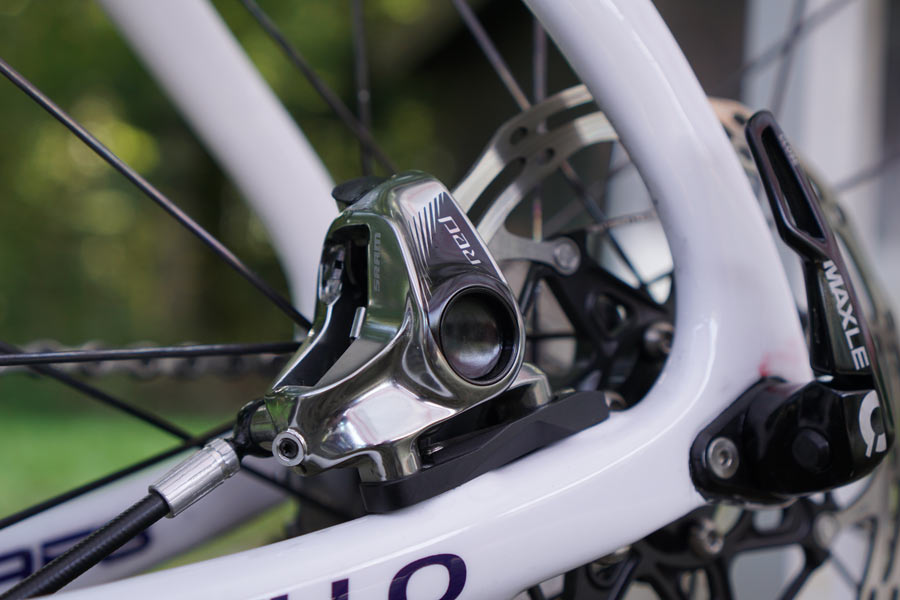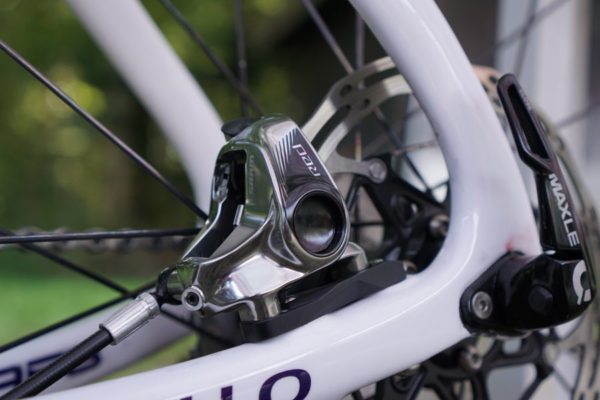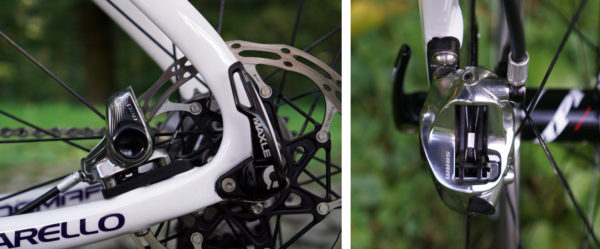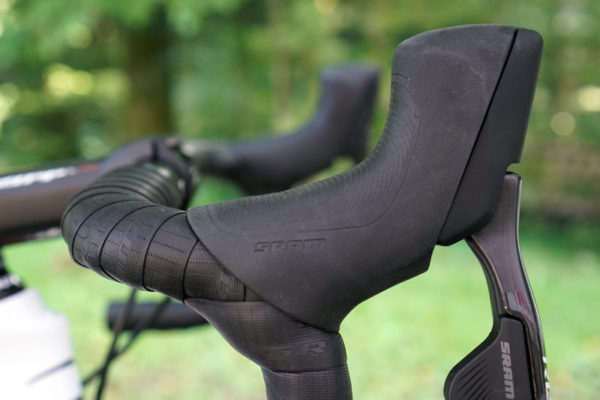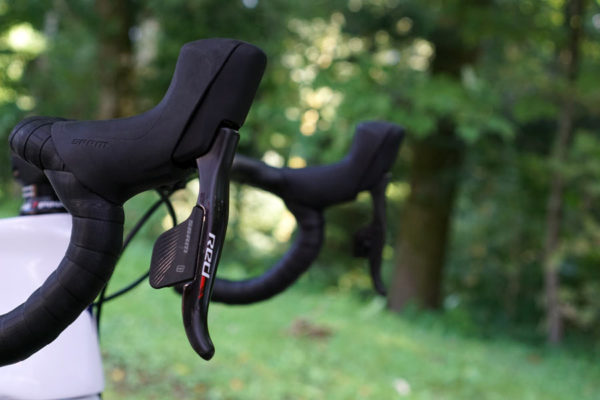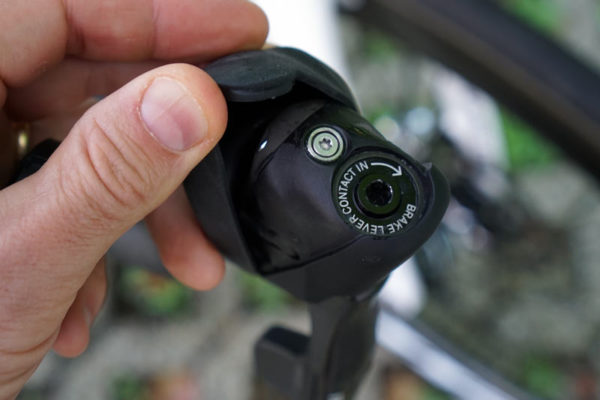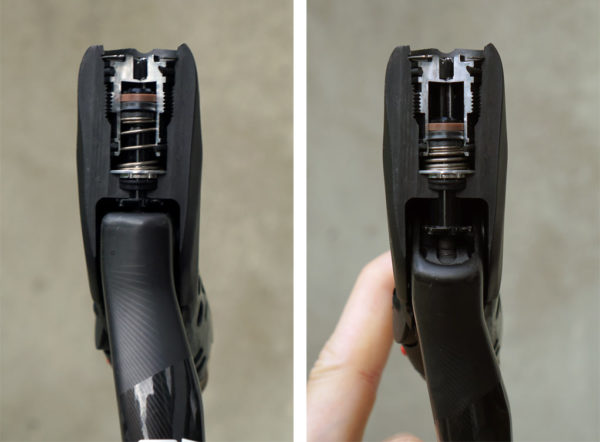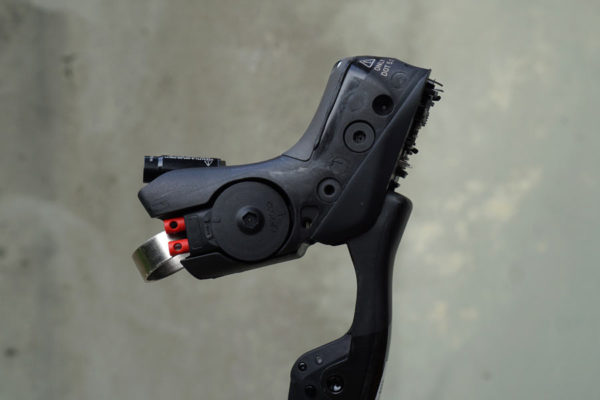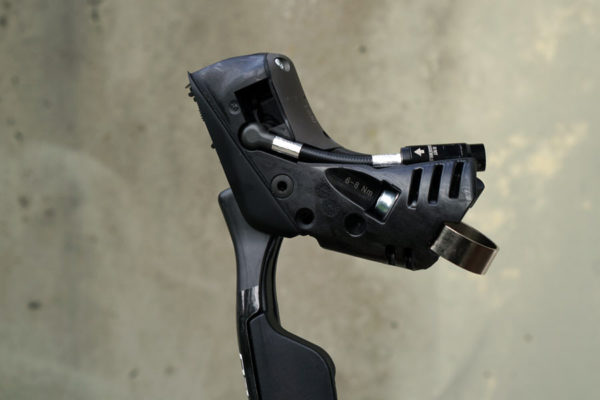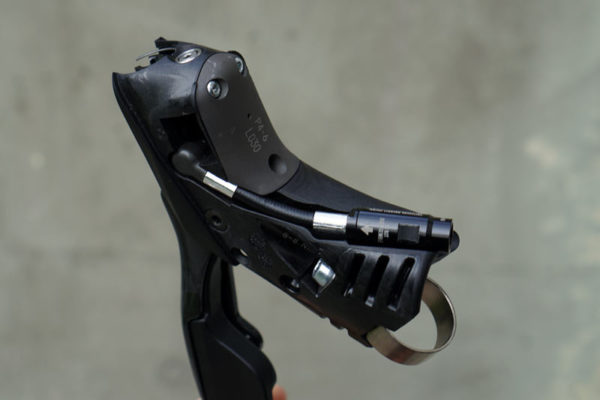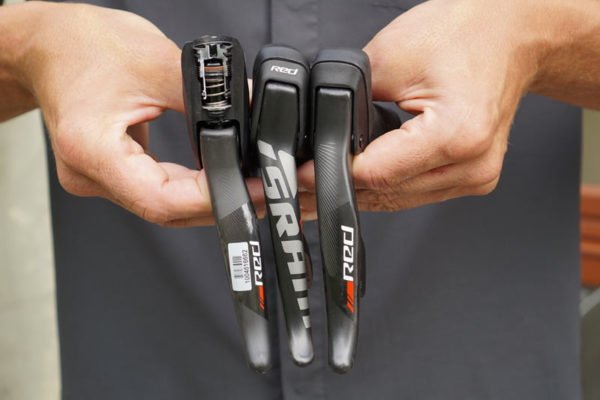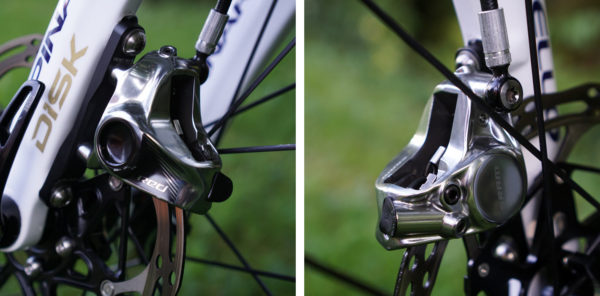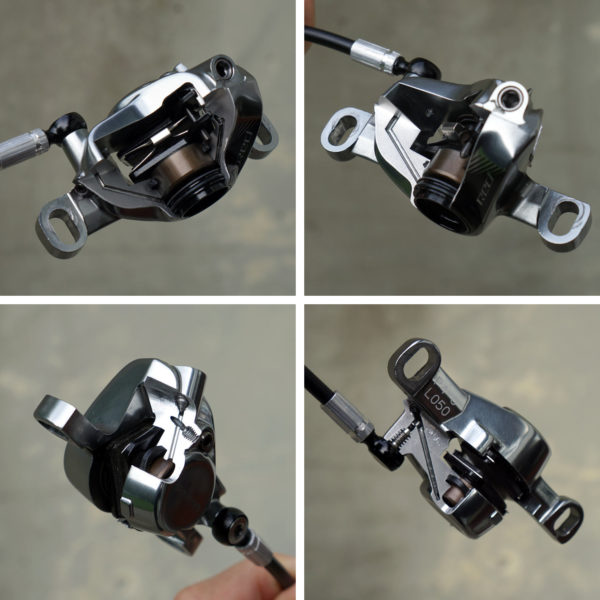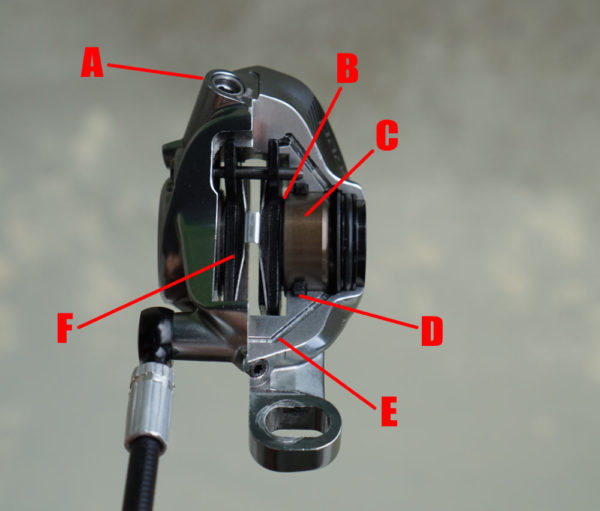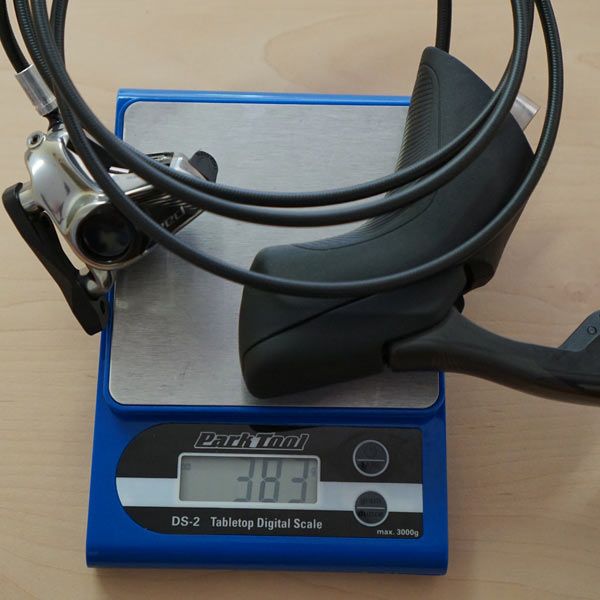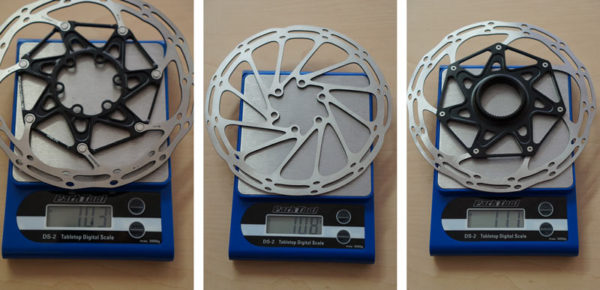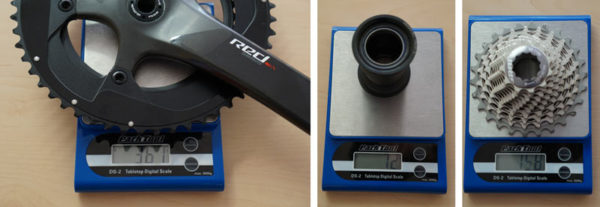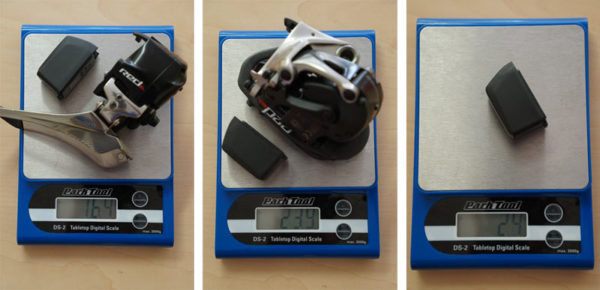SRAM’s HRD program started all the way back in 2010, looking at everything from mechanical-to-hydraulic adapters to full hydraulic systems. They spent three years testing it before the initial release in 2013. After some initial stumbles, the SRAM HRD hydraulic road disc brakes really made it to market in 2014. And they were good. But immediately, they started working on the second generation (which was teased here after so many spy shots and leaks made it on to the Interwebs).
The new Hydro HC hydraulic platform is all about control, which, in their words, is what makes speed possible. And based on our first test ride through the rolling, curvy hills of southern Germany, they do indeed improve upon an already very good system. Here’s what’s new…
As good as the braking on some carbon rims is getting, SRAM’s brake product manager Paul Cantor admits further development on that front delivers diminishing returns. Disc brakes are the future, which is why they’re putting so many resources into making their disc brakes better.
For now, Hydro HC will only come on Red eTap HRD, the other hydraulically braked groups (Red, Force, Rival, etc.) will continue using the original HRD design.
The hood shapes are refined, moving and tilting the master cylinder further forward to make more useable room on the hoods. They have reach and a new contact adjustments, and the lever feel also gets updated. Lever stroke is a bit lighter, but the return is a little quicker.
Reach adjust is fairly simply, using an allen bolt to bring the lever closer or further from the bar to fit different size hands or personal preferences.
Contact adjustment is tweaked at the top of the hood and moves the timing port placement within the master cylinder.
Dial it down and you’ll move the the timing ports down, further away from the the cup seal (orange and black thing at top of spring), so you’ll have to pull the lever further before it closes the system and the fluid starts moving the pads toward the rotor. Dial it up (counter clockwise), and you reverse that, making it so there’s less lever pull required to initiate braking. On the right, you can see the reach adjustment rod running up from the lever to the piston.
The battery and Blips/Clics button wire ports are on the outside of the lever.
A new Stealth-a-majig hose connector fits into the hood body and lets you more quickly reroute the brake hoses or install a system from scratch by letting you run the hose up through the frame and then simply connect it to the lever. It’s recessed into the body of the lever, so you don’t feel it under the hoods.
The lever’s bleed port on the lever sits far above the hose entry point, which makes it highly unlikely that any air in the system will get pushed into the hose during normal use either…or even when you store the bike hanging from the wall.
Size wise, the eTap HRD levers are virtually the same as the rim brake models, and the brake lever pivot is in the same spot, too, so they should feel right at home if you’re upgrading from another SRAM road group.
They’re offering post- and flat mount versions of the new Mono-block (one-piece) caliper. It’s a forged, one piece unit, which improves rigidity over the two-piece forged design on standard Red HRD. They’re sticking with the commonly available and proven DOT 5.1 fluid.
Heat management is improved by adding a stainless steel heat shield (not shown on cutaways) between the pads and the caliper body, which blocks a lot of heat from transferring into the caliper.
Insulated hollow aluminum pistons (C) replace the full phenolic pistons, but they do use a phenolic cap (B) between the piston and the pad (F) to reduce heat transfer. The combination provides the best result because they can better control the surface finish of the aluminum, which is then coated with a Kashima-like treatment so it slides very, very smoothly in and out of the seals (Guide Ultimate and Level Ultimate mountain bike brakes also use this design). It’s a more expensive parts and manufacturing list, though, which is why it’s only on the top end. Lastly, they opened up the pad pocket to let more air flow through. Also shown are the piston seal (D) and bleed port (A).
Inside the forged caliper body is a revised fluid path (E), similar to their latest mountain bike brakes, letting the fluid more easily fill the ports without having anywhere for air bubbles to hide during bleeding. It uses the Bleeding Edge bleed port adapter, which drastically simplifies the bleeding process.
The 6-bolt (two piece and one piece) rotors carry over, joined by new two-piece Centerlock rotors. All three come in 140mm and 160mm sizes. They recommend 160mm for most applications, but the 140 is there for cyclocross. And daredevils.
RED ETAP HDR ACTUAL WEIGHTS
Select parts were on display, so we weighed what we could. Above, the rear brake and shifter lever comes in at 383g. Expect the front to be only about 10-15g lighter.
The 160mm rotors come in at 103g (2-piece 6-bolt), 108g (1-piece 6-bole), and 117g (2-piece Centerlock).
Other than the shifter levers’ incorporation of the hydraulic brake master cylinder, the drivetrain parts remain the same as mechanical-brake eTap. You can check the full tech story on eTap here. Chainset side of the cranks was 361g, the non-drive with spindle wasn’t available, but these weights should be the same as what we’ve weighed before. Pressfit BB30 bottom bracket is 72g, and the 11-26 cassette is 158g. For now, there’s still no WiFLi cassette – we asked, and the muffled answer amounted to “it’s coming soon”. After all, #crossiscoming, though we’re not in any way suggesting we know that it’ll deliver in time for this season…the HRD parts don’t even ship until early next year.
Claimed weight for the SRAM Red eTap HRD kit is 960g with rotors, and it comes in a claimed 285g heavier than the equivalent mechanical-rim-braked eTap group.
PRICING
The complete Red eTap HRD kit will be available in early 2017 and includes:
- shift/brake levers and calipers ($490 / €450 / £379 each)
- front derailleur w/ battery ($370 / €345 / £281)
- rear derailleur with battery ($590 / €550 / £487)
- power pack charger ($70 / €65 / £55)
- 160mm Centerline rotors with Ti hardware ($72 / €76 / £64)
- USB firmware update dongle ($50 / €45 / £38)
- TOTAL: $2,204 / €2,057 / £1,707
Assuming you’re not adding it to an existing SRAM 11-speed group, the mechanical drivetrain parts to finish it off are:
- SRAM Red GXP crankset ($406 / €427 / £362)
- Red 22 hollow pin chain ($43 / €45 / £38)
- 11-28 Red cassette ($251 / €272 / £232)
- GXP Team threaded BB ($36 / €37 / £31)
- MECH PARTS TOTAL: $736 / €783 / £663)
A full ride report will come after Eurobike, but suffice to say the changes aren’t just impressive on paper, they translate well to the road. Braking power comes on slightly faster than before, yet its performance remains more linear and predictable than competing systems.
